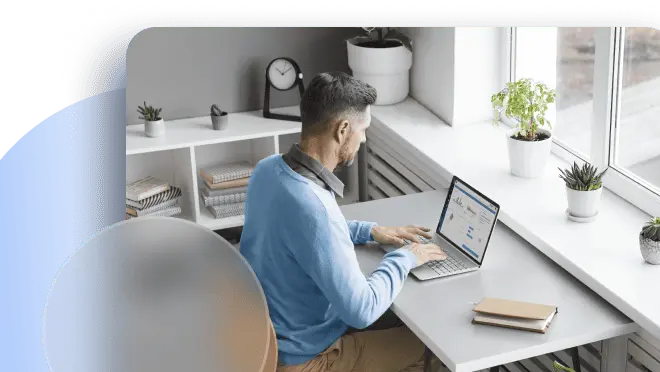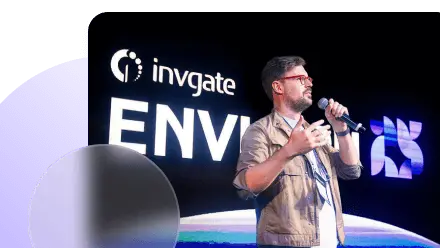ITSM statistics reveal how organizations are structuring their operations, which processes receive the most focus, and how users experience IT services in practice.
Reviewing data from various sources provides a clearer view of what IT teams are prioritizing in IT Service Management — what’s improving, and what still needs adjustment to deliver better support experiences.
In this article, we’ll look at some of the most relevant ITSM stats heading into 2026 — from automation and self-service adoption trends to the real impact of downtime and ticket management on user productivity.
Let’s get started!
ITSM market size and forecast
- Forecasts suggest the global ITSM market will reach $22.1 billion by 2028 at a CAGR of 15.9%.- MarketsandMarkets
- The Cloud Information Technology Service Management Market size is estimated at USD 4.99 billion in 2025, and is expected to reach USD 5.60 billion by 2030, at a CAGR of 2.33%. - Mordor Intelligence
- Data suggests that many businesses are moving to cloud-based solutions looking for ease of management, with business continuity (60%) and scalability (59%) ranking as the second and third most important factors driving this transition. - Site24x7
Customer experience and satisfaction in IT support statistics
- The average waiting time in customer service queues decreased from 5 minutes 16 seconds in 2022 to 3 minutes 40 seconds in 2023. - Live Chat research.
-
There's a 90% satisfaction rate for queue times under 2 minutes. Meanwhile, satisfaction drops to 40% for queue times exceeding 10 minutes - Census.com
-
90% of customers expect an “immediate” response when they have a customer service question, and 60% of customers define “immediate” as 10 minutes or less. - Hubspot
-
According to MetricNet, 84% of respondents said the service desk is the most important factor in their overall satisfaction with corporate IT services.
Similarly, Happysignals found that 47% of users giving feedback on IT experience mentioned IT support as the main factor influencing satisfaction.
-
In 2025, end-users rated outsourced and internal service desks, and the experience gap is minimal.
-
Happiness score: Internal +78 vs. Outsourced +75.
-
However, end-users perceive less lost time when incidents are resolved internally (3h 22min) compared to outsourced teams (4h 18min). (HappySignals)
-
- First Contact Resolution (FCR): FCR is the strongest metric linked to customer satisfaction. A 1% gain in FCR leads to a 1% increase in satisfaction. (Contact Center Pipeline)
IT support workload and ticket volume stats
- 34% of support teams report an increase in ticket volumes, with organizations handling an average of 10,675 tickets monthly. (HDI State of Tech Support 2025)}
- Each user contacts the help desk 1.25 times per month. For 1,000 users, this equals roughly 1,250 calls monthly. This rate decreases in stable environments, while it can exceed 3.0 in unstable environments. (GHDSI)
- The cost per ticket in North America varies between $6 and $40 or more, depending on complexity and efficiency. (HDI Benchmarking)
- 13% of tickets cause 80% of all lost productivity. Reassigning tickets significantly affects satisfaction — happiness scores fall from +85 to +52 as reassignments increase. (HappySignals)
IT service desk performance and support agent experience
- 90% of service agents think working in corporate IT will become more difficult over the next three years. Nearly half believe this applies to all IT roles. Also, 74% say working in IT has negatively affected their well-being, up from 61% in 2024. - ITSM tools
- When asked about the biggest challenges service agents face, 52% of agents reported that the main challenge was “dealing with upset customers.” “Prioritization of customer questions” was the second most reported challenge - Hubspot
- About 75% of respondents indicate that their organizations address tickets outside of regular business hours, whether via a 24-hour support center (29%) or through other methods – including on-call staff, chatbots, or outsourcing to a provider. - HDI
- Fewer than half of support agents indicate that new hires can achieve job proficiency within the first two months of onboarding, and only about 40% of respondents mentioned that employees receive more than 10 days of ongoing training per year. - HDI
ITSM and AI adoption stats
- 14% of organizations already use AI in training modules.
- 38% are preparing to implement AI solutions.
- 71% cite improving customer experience as their main reason for new technology investments. (HDI State of Tech Support 2025)
- Companies using AI-powered tools observe a 75% reduction in ticket resolution times, leading to lower operational costs per ticket - Rezolve.ai
Support channels and self-service behavior statistics
-
Preferred support channels: Telephone (97%), Email (86%), Self-Service (79%), Live Chat (70%), and Walk-up (60%) remain the most common channels. (SDI Service Desk Benchmarking 2024)
-
62% of customer service channel transitions are considered “high-effort.” After such an experience, less than half of users will try self-service again. (Gartner)
-
Almost 80% of customers expect self-service tools to resolve issues independently. (Higher Logic)
-
Generational differences in support expectations: While 55% of baby boomers persist until contacting multiple people, 55% of millennials and Gen Z will reduce their use of the product or service if self-service fails. Additionally, 52% would stop buying from that business, and 44% would share their negative experience. (Gartner)
- 81% of customers will attempt to resolve issues independently before contacting customer support. - Harvard Business Review
- 91% of users say they would use a knowledge base if it meets their needs. However, 40% of customers reach out to a call center after they've tried to self-serve, so customer self-service solutions frequently fall short. - Zendesk
- Organizations report up to 70% reductions in calls, chat, and/or email inquiries after implementing a Virtual Customer Assistant. - Gartner
ITSM maturity and adoption levels
Even though this data comes from 2022, the AXELOS BenchMarking Report remains one of the most detailed and useful studies on the state of ITSM adoption. We’re referencing it here because, despite the publication date, it still offers a solid snapshot of how organizations perceive their ITSM capabilities — and where they run into trouble.
What did the survey reveal?
- 48% of organizations rated their ITSM capabilities as “great” or “good.”
- About 27% said they were “getting there,” while 22% admitted they had “still much to improve upon.”
That creates a near 50:50 divide between those who feel they’re doing well and those who see room for significant improvement.
So what’s holding some organizations back? The report asked respondents to identify a single primary challenge in improving ITSM. The responses varied widely, but one theme stood out: a lack of senior management buy-in remains the most common roadblock. On the other hand, very few cited inadequate tools as their main issue — only 4%. That suggests most organizations have access to Service Management tools, even if not all of them are using one that truly fits their needs.
46% of organizations thought their ITSM tools to be “great,” while 24% wanted to replace theirs. This finding supports the ITSM tool churn the industry has seen over the last two decades. Surprisingly, 11% of respondents stated that their organization still doesn’t have an ITSM tool.















